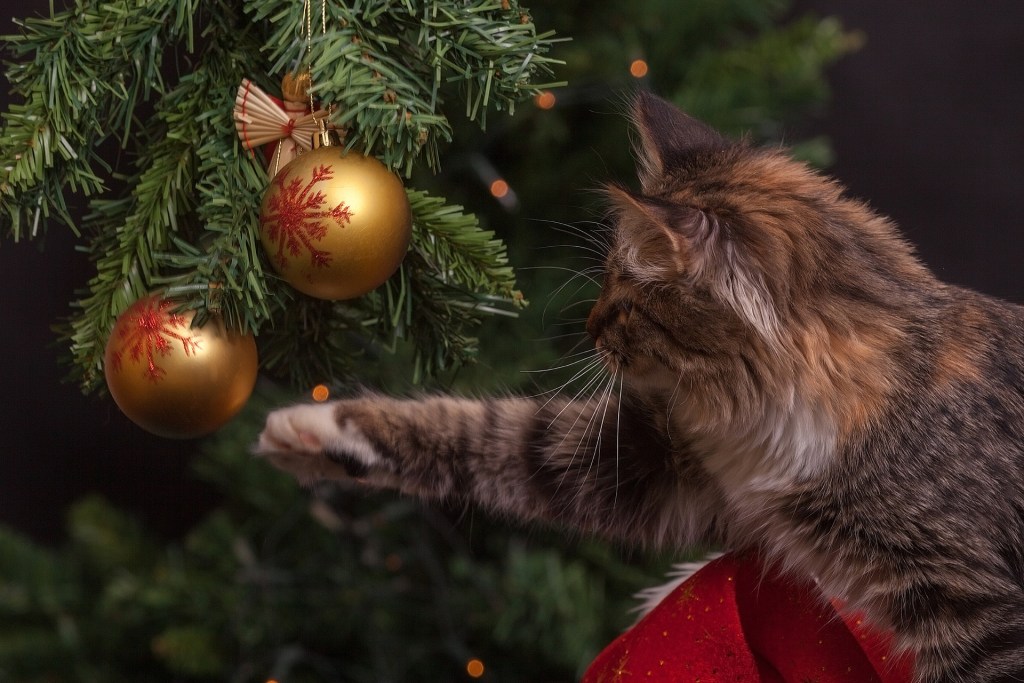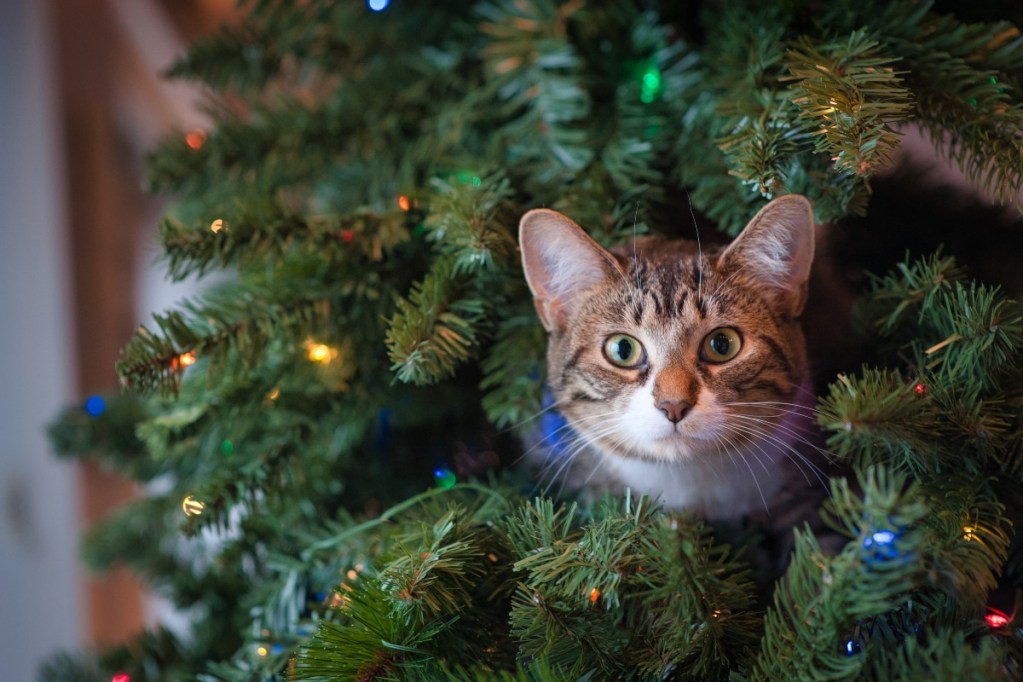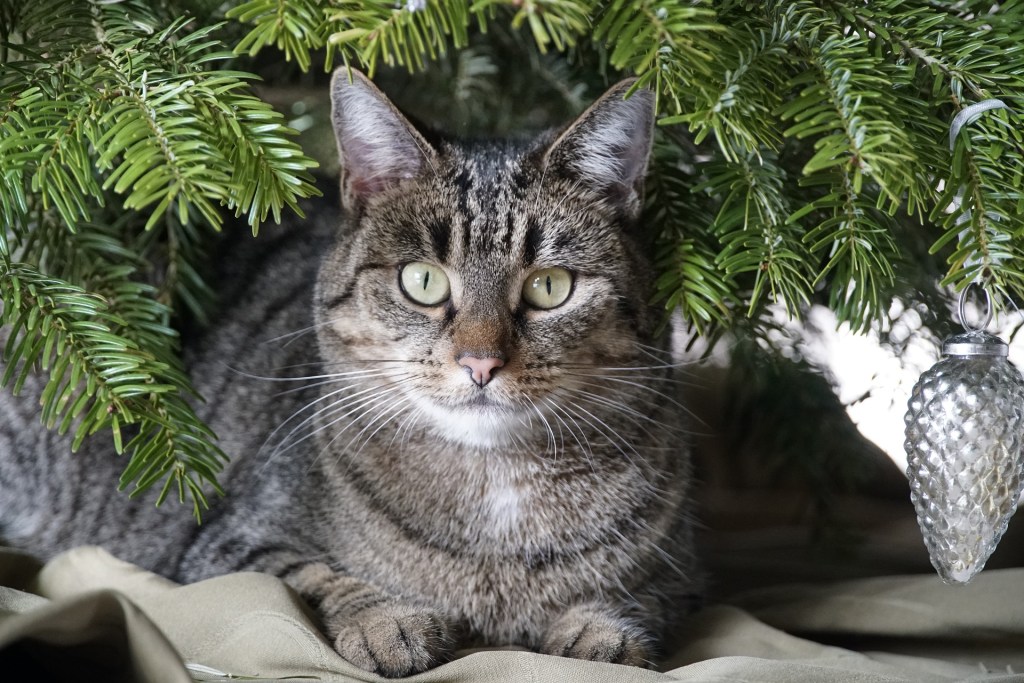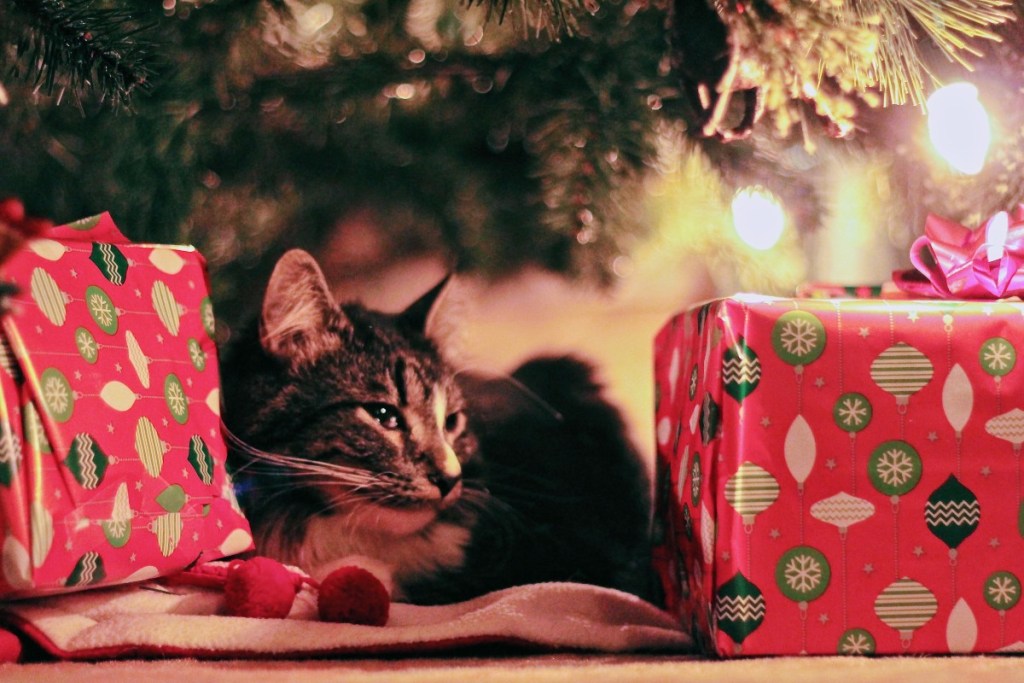As the holidays approach, you’ll probably start decking your halls and home. This annual to-do probably means putting up the Christmas tree. You might put a lot of time and effort into finding the perfect location for the tree and picking out the best spots for each ornament, but your curious cat can undo all of that work in seconds if he decides to climb the tree.
We’ve all seen the videos that circulate each year of cats decimating Christmas trees, destroying ornaments, and potentially even hurting themselves in the process. Keeping the cat out of the Christmas tree can be a real challenge, but these tips can help keep both your tree and your kitty safe.

Put your tree in a secure room
One of the easiest and most foolproof ways to keep your tree safe from your cat is to put it in a room that you can close off and keep your cat out of. If you have doors in your living room, a den, or an enclosed office, you might want to consider putting the tree in that room and keeping the doors closed. When the family’s home and you’re spending time in the room, your cat can come in and join you, but when it’s time for bed, remove your cat from the room and close the doors.
You can sometimes create this same effect using pet gates. You’ll need multiple gates that you can stack up in the doorway to keep your cat out. This method may or may not work, depending on how ambitious your cat is.
If protecting a full-size tree from your cat is difficult, consider getting a smaller tree that’s only a foot or two high. You’ll still be able to decorate the tree for Christmas, but there won’t be much tree for your cat to climb. If the tree does fall, it won’t endanger your cat. If you decide to use a full-size tree, you’ll need to carefully plan how you can keep your cat safe.
Secure your tree to protect your fir and furry friend
If you suspect your tree will need to withstand attacks from your cat, then take extra measures to secure it so it stays upright. Invest in a broad, heavy base that stabilizes the tree from the bottom, then create multiple anchor points to secure the tree to the wall and the ceiling.
Putting your tree in the corner of the room can make this easier, since you can secure it to both walls with wire. You may be able to insert heavy-duty screw eyes into the corners or edges of your windowsills, then attach the wire to those screw eyes. This can help conceal the anchors a bit, and it means you won’t have to create holes in your wall. Alternatively, position the tree next to a stairwell, so you can anchor it to the banister.

Carefully choose your ornaments
Choose ornaments that your playful cat won’t easily damage. Look for plastic bulbs, cloth ornaments, and other durable items. To make the tree less tempting, consider not hanging ornaments on the bottom foot or so of the tree, so there are fewer fun-looking things to catch your cat’s attention. Have a playful kitten? Then maybe it’s best that those fragile, treasured ornaments stay packed away this year.
Make sure to avoid anything that could be toxic or harmful to your cat. Spray snow isn’t a good idea, and avoid tinsel, which can cause intestinal blockages if your cat swallows it. Sweep up pine needles frequently so your cat isn’t tempted to chew on them.

Always supervise your cat
Even with plenty of planning, it’s still important to closely supervise your cat. There are all sorts of dangers that come with the holidays, including your tree, decorations, and the extra food that’s present during parties. Planning ahead and making sure your cat can’t get access to many of these dangers is a good first step in helping to keep him safe, but it’s still important to be aware of what your cat is up to during the holidays. With some extra effort, you may be able to protect your Christmas tree from your cat so you can all enjoy it together without worrying about when it will come toppling over.
Editors' Recommendations
- Wondering why cats chirp? Fascinating reasons why your cat chirps at birds (and you)
- How to cat-proof your balcony before the unthinkable happens
- There’s a totally normal reason cats throw up after eating grass – here’s why
- When do kittens’ eyes change colors? The answer is so cool – here’s what to know
- Your cat trilling is actually a good thing – here’s why




